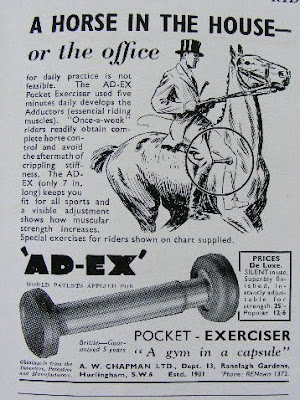The visit to the blacksmith's was a helpful plot device for so many pony books; all lost now the farrier comes to you, though there is of course the long wait until the farrier turns up, the sudden dearth of mobile phone contact from said farrier as you wait about, the deep frustration as you finally give up, and then the twilight trek up to the field, armed with threats as you spot someone trudging around there after the horses, only to find it is the farrier, turned up at last. Below is the traditional scene beloved of pony books: and here, because I am on a bit of an old equestrian building mission at the moment, is another smithy: this one is at Carlton-on-Trent, and the picture comes from Riding Magazine, July-Sept 1944. At that time, the occupant was F Naylor, who put up the noticeboard with the verse. F Egerton, who sent in the picture, sent in the text of the verse as well: Gentlemen as you pass by upon this Shoe pray cast an eye; If it be too strait I'll make ...









